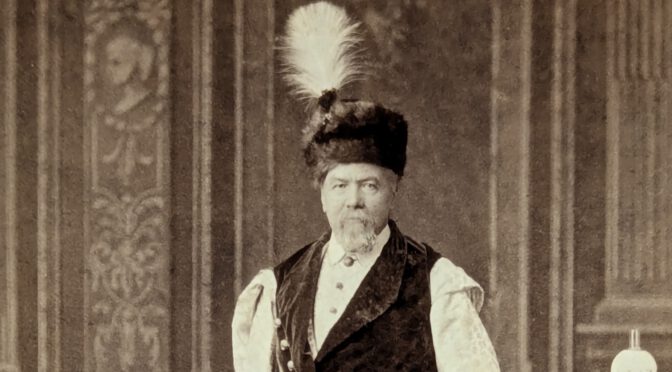This is a bit of an unusual type of post for my blog. Instead of lots of texts, I’ll be mostly posting a few images instead, namely photos depicting Johann Götz (aka Jan Ewangelista Goetz) that I found in the National Archives in Kraków. The quality may not be the absolutely best, as I basically just took snapshots with my Pixel 6 phone camera, but it’s good enough for now.
None of the photos were dated, so when it comes to the age of them, all I can say is “1893 or earlier”.
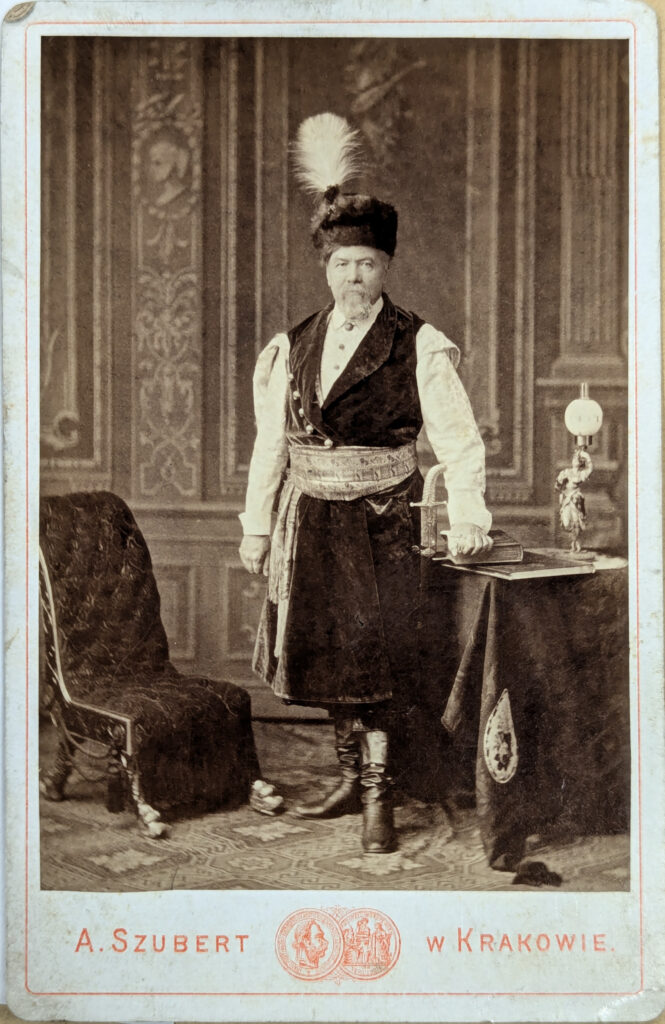
The first one is a photo taken by Awit Szubert (1837-1919), a photographer from Kraków. In this photo, Johann Götz wears historic clothing of Polish noblemen, a kołpak hat with a feather on his head, and boots. Attached the clothes is some sort of side arm, like a knife or a small sword. Johann Götz is stood next to a table and has his left hand on a book. On the other side of him, there’s a cushioned chair.
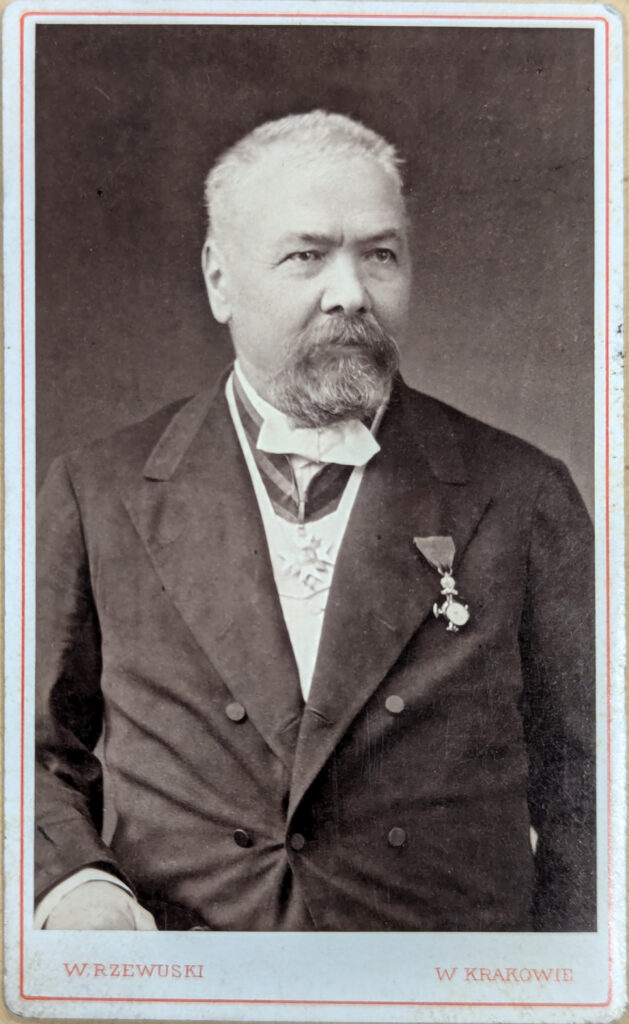
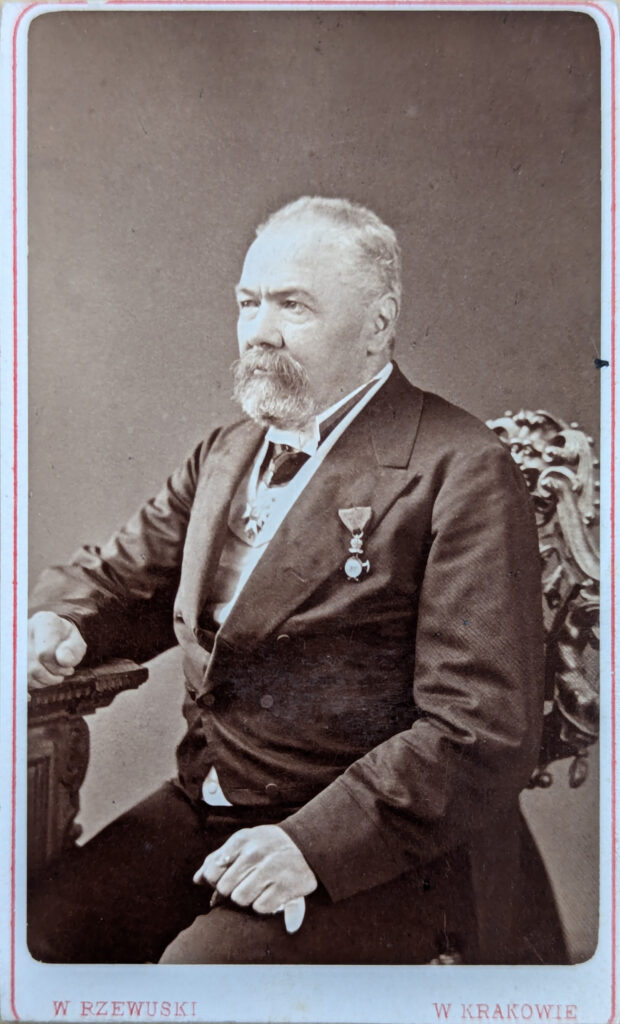
The next two photos show Johann Götz wearing a suit jacket with two medals, one around his neck, and one as a breast medal. Both photos were taken by Polish photographer Walery Rzewuski (1837-1888), based in Kraków. The breast medal is the Golden Cross of Merit with the Crown, while the one around his neck is the Knight Commander medal of the Pontifical Equestrian Order of Saint Sylvester.
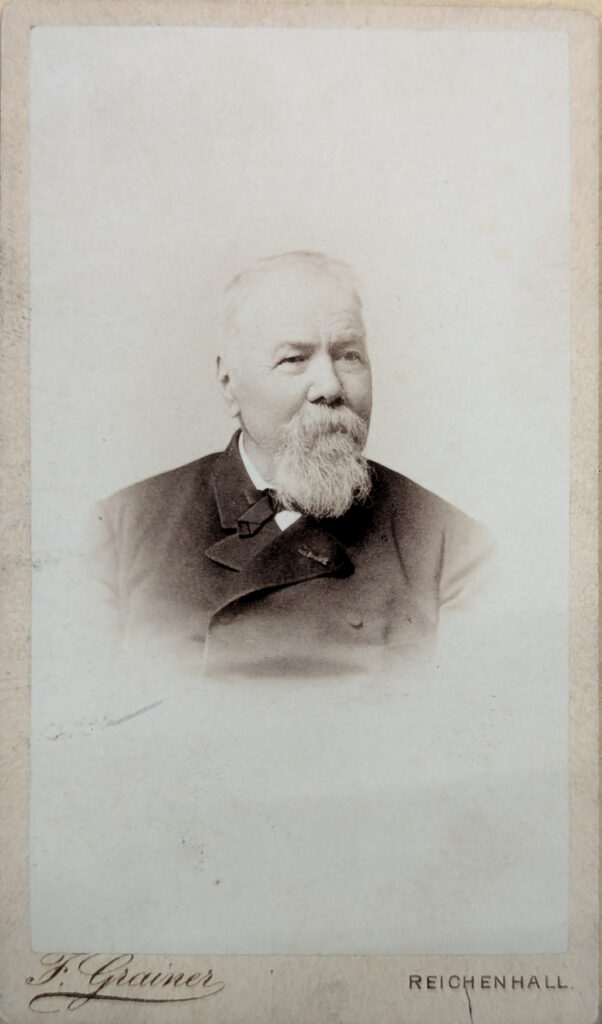
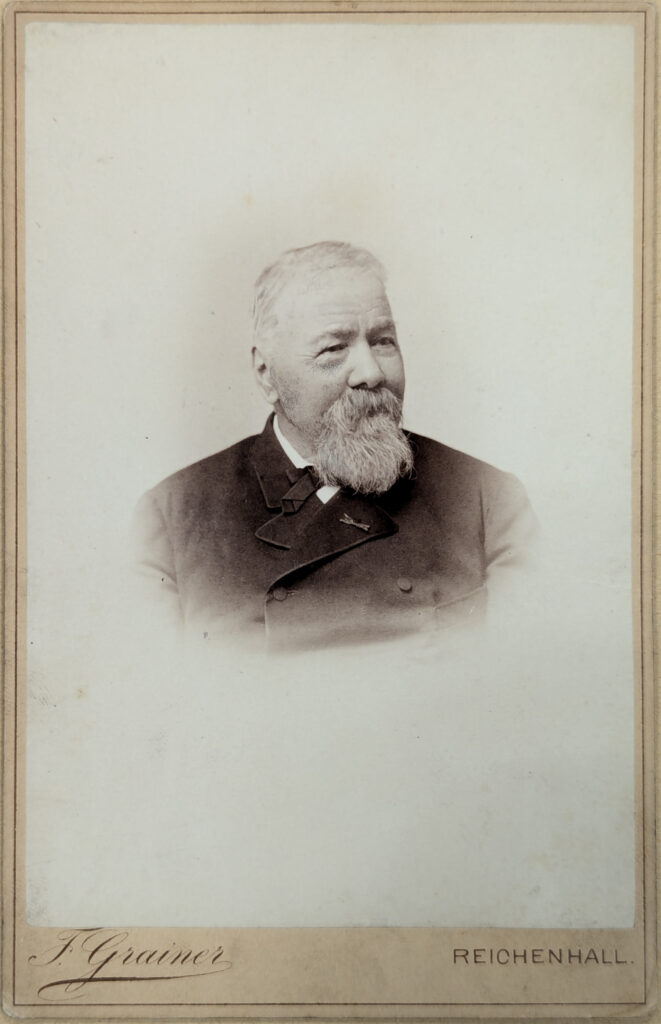
The final set of photos are two portraits of Johann Götz by Franz Grainer (1840-1904) in Reichenhall, Bavaria. Again wearing a suit jacket but this time buttoned up all the way, he looks more serious with a straight head on the left one, but a bit more smiley (as much as that’s noticeable with his beard) with a slightly tilted head on the right one. Franz Grainer was also the court photographer of Princess Therese of Oldenburg, as is noted on the back of one of the photos.
Judging from the years of death of each of the credited photographers, I would say that the photos themselves are all in the public domain (in Poland, copyright expires 70 years after an author’s death). Please note that this is not legal advice.

